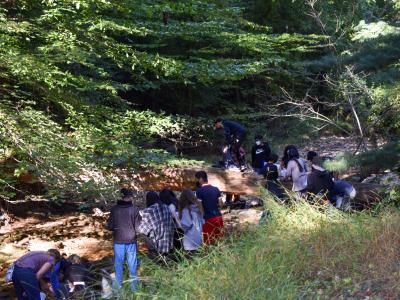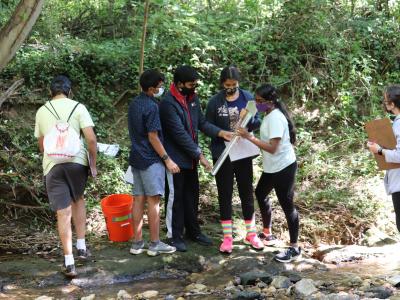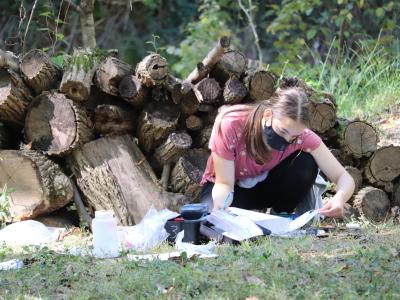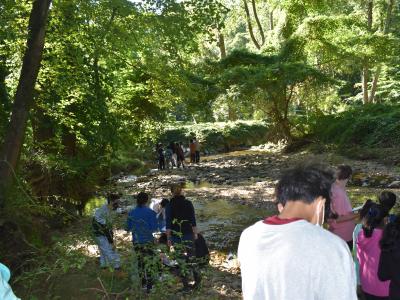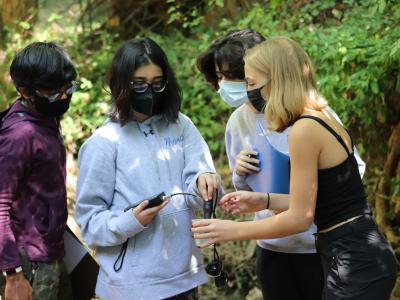TJ Educational Experiences - IBET Teams Look at Local Stream Health
Four IBET teams recently participated in a project that looked at the health of the local Indian Run stream, which is located about a half mile west of TJ. Dr. Kathy Morrow submitted a summary of the project, plus a photo gallery is available below:
Students in 4 IBETs (Morrow, Holman, Lee, and Morrow/Lee) spent much of September learning about Experimental Design and the Scientific Process through examples related to stream ecology and our urban watershed. Students used interactive virtual resources such as Map my Watershed to find their local sub-watershed, a stream near their home, and where this water drains to. They learned about chemical water quality analysis testing, which included tests for dissolved Oxygen, nitrates, phosphates, copper, chloride, transparency, velocity, etc. They also learned about the importance of pairing chemical testing with biological water quality testing, and learned how to enumerate E.coli and coliforms in addition to identifying major macroinvertebrates (aquatic insects) that are indicators of stream health. The students practiced scientific reading and presentation skills by working in pairs to present a 1-slide presentation on a scientific paper related to one of the key stream ecology topics we plan to focus on for their yearlong IBET projects.
All of this preparation culminated in a half-day field trip to Indian Run, a stream that runs behind TJ near Randolph Dr. This reach (or section) of stream has never been surveyed by the county and its water quality status was unknown. We collaborated with education specialists from Trout Unlimited and the Northern Virginia Soil & Water Conservation District for permitting and site access. These experts also provided a macroinvertebrate sampling demonstration and some fantastic background information about Indian Run. Students broke into groups and conducted a full suite of chemical and biological water quality measurements, which they compiled into a group google-spreadsheet. Finally, we came to conclusions as a class about the water quality of Indian Run.
Unfortunately, although the chemical water quality testing results were generally good, our biological assessments paint a different picture. We found way above the recreational limit for E.coli/coliforms and the macroinvertebrate diversity suggests that the stream is in an unacceptable ecological condition. The highly eroded stream banks are also covered in invasive plants such as English Ivy. Students will be studying different aspects of stream health through their IBET projects this year, ending by developing a technological solution that might help mitigate some of stressors faced by streams and the organisms that depend on them in our own backyards.
